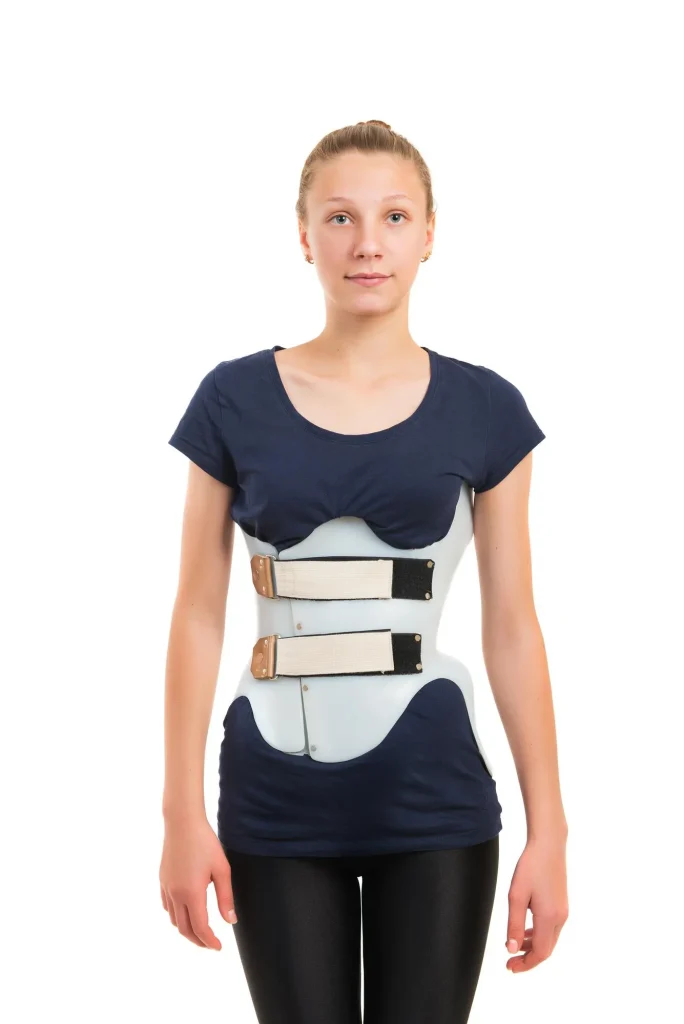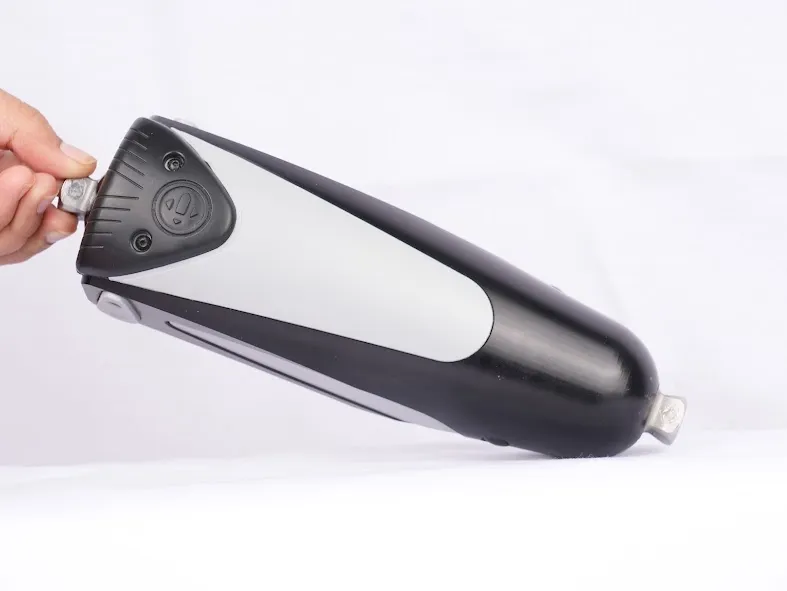
Cerebral palsy (CP) can affect simple movements like walking or standing, which can feel overwhelming due to stiff muscles, weakness, and imbalance. It is an outcome of injuries to the developing brain before birth or during, and sometimes at a later stage. Cerebral palsy braces worn externally stabilise joints, support weak muscles, and enhance independence.
In this blog, we’ll explore the types of cerebral palsy braces and how to choose the best brace for lasting mobility and comfort.
What are The Effects Of Cerebral Palsy?
Cerebral palsy (CP) progressively affects muscle control, coordination, and posture. Children and adults with CP experience:
- Stiff muscles or spasticity
- Problems in walking or balance
- Deformities in the foot and toe-walking
- Instability in the knee and hip
Joint deformities or pain follow a lack of correct support.
Why Cerebral Palsy Braces Are Essential?
Cerebral palsy braces are external devices that form an important part of cerebral palsy treatment. Cerebral palsy orthotics boost mobility and support the individual in overcoming walking issues, getting support for muscle weakness:
- Children develop a sense of security while standing and walking, which further increases self-confidence.
- Braces help reduce discomfort from awkward gait patterns.
- Braces make walking stable and less painful, and reduce falls and injuries.
- Support weak joints and keep them aligned. Prevent muscle contractures and deformities from progressing.
- The individual with cerebral palsy has a better life as the braces improve posture, reduce pain, and boost functionality.
Types of Cerebral Palsy Braces
The selection of the correct brace depends on the type of cerebral palsy, its severity, and walking challenges. Below are the common options:
1. AFO Braces for Cerebral Palsy (Ankle Foot Orthosis)
Ankle Foot Orthosis (AFO) braces are the preferred orthotics for individuals with cerebral palsy.AFOs are suitable for individuals suffering from foot drop, weakened ankles, or stability challenges in walking. The devices provide support needed to promote mobility freedom in daily activities.
Function: AFOs keep the foot in a flat position, providing a stable base for standing and walking.
Benefits:
- Ankle stability
- Controls foot drop
- Corrects toe-walking
- Supports walking patterns
- Treat musculoskeletal deformities.
Types:
- Rigid AFOs offer a fixed position for the foot to prevent toe walking and maintain alignment.
- Hinged AFOs offer more flexibility while still providing essential support.
- Dynamic AFOs (DAFOs) offer balance and feedback to the brain.
2. Knee Braces for Cerebral Palsy
When children have instability in their knees, it affects their ability to stand and walk. Knee braces provide extra support for weak knee joints.
Function: These devices give support, stability, and align the knee join for individuals with CP. The knee braces therefore, support standing, reduce the risk of falls, maintain muscle tone, and coordination.
Benefits:
- Stabilises knee movement
- Reduces risk of falls
- Enhances leg alignment
3. Full Leg Braces
Individuals who have severe weakness in lower limbs can get support from cerebral palsy leg braces that cover the entire leg.
Benefits:
- Improves standing balance
- Provides complete leg alignment
- Assists with early mobility training
4. Spinal Orthoses:
These braces specifically support the spine, correct posture, stability, and slow the progression of scoliosis.
Benefits:
- Improve spinal alignment
- Support proper posture
- Enhance stability and balance
- Slow progression of spinal deformities
- Improve comfort and quality of life
Key Factors For the Best Orthotic Treatment for Cerebral Palsy
Selecting the right brace needs the combined effort of caregivers, physical therapists, and orthotists:
- Mobility level: Access if the child needs help with walking, standing, or both.
- Age and growth: Braces must accommodate the growing needs of children.
- Fit: Correct fitting prevents skin problems, offers comfort and ensures long-term wear.
- Type of cerebral palsy: Different problems need different orthotic designs.
- Assessment: A qualified evaluation to determine the best orthotic strategy.
- Regular follow-ups: Essential to adjust the brace as the child’s needs change.
Why You Need Orthotic Treatment for Cerebral Palsy?
For children with cerebral palsy (CP), stiff muscles, joint misalignment, and abnormal movement patterns create extreme difficulty in walking and maintaining balance. Therefore, they need external help to support efficient gait.
Orthotic treatment or cerebral palsy braces make joints stable, support weak muscles, and improve walking. These braces support proper movement patterns and prevent complex issues in the future.
Key Goals of Orthotic Treatment
Orthotics align the limbs, control abnormal muscle activity, and provide support for safe movement:
- Offer a stable foundation for proper mobility to enhance balance and coordination.
- Support an efficient gait and make walking natural and less tiring.
- Minimise muscle spasticity and abnormal motions.
- Improve mobility by creating a step pattern for proper walking.
- Reducing energy use so children can move with less fatigue.
- Supporting transitions between sitting and standing for greater independence.
- Prevent injuries and improve joint stability.
- Strengthen weak muscles and control muscular imbalances.
- Correct skeletal alignment to prevent long-term deformities.
- Improve functionality, boosting confidence and independence.
When to Introduce Cerebral Palsy Braces?
Cerebral palsy braces should ideally be introduced when the mobility issues are noticeable. Early treatment effectively prevents deformities, supports growth, and has effective results. Moreover, the adjustable features are suitable for the changing needs of children.
Why Individuals Need Customisation Of Braces?
Custom-made braces can fit the specific needs of individuals:
- Tailored features suit the child’s unique anatomy, growth patterns, and mobility needs.
- Gives ease of use, comfort and provides better outcomes.
- Follow-up visits can track progress and proper brace function.
- Timely modifications help braces remain aligned with the child’s physical development.
How To Care for Cerebral Palsy Braces?
Proper care of braces can be done by :
- Cleaning with soap and water
- Checking for signs of wear or damage
- Adjusted the brace by a certified orthotist when usage changes occur
Correct care is needed for consistent support for the child’s mobility, and prevents discomfort or skin irritation.
Conclusion
Cerebral palsy braces are critical, transformative devices that provide proper support for growing children with cerebral palsy, thereby increasing their chances of improving mobility, reducing deformities, and receiving quality support.
KARE Prosthetics & Orthotics is your destination for quality pediatric prosthetics and orthotics that adapt to the needs of individuals with cerebral palsy. Our team promises children with physical challenges and their families the best care and support.
Contact us at KARE Prosthetics & Orthotics for a free consultation on customised orthotic solutions and walk with confidence.
Frequently Asked Questions
1. Should adults with cerebral palsy wear AFO braces?
Yes, adults with cerebral palsy should wear AFO braces as they stabilise the ankle and foot, improve balance, and correct abnormal gait patterns. Moreover, the braces reduce pain, joint deformities, and encourage efficient walking. Even Adult individuals can enhance mobility and independence if they are experiencing muscle weakness or spasticity.
2. What is an AFO for a cerebral palsy brace?
An AFO (Ankle Foot Orthosis) is a special brace that supports the ankle and foot. For individuals with cerebral palsy, AFOs help:
- Prevent toe-walking
- Stabilise the foot and ankle
- Improve walking patterns and balance
- Reduce muscle strain and fatigue
These braces are custom-made to fit each person’s needs and are commonly used in children and adults with cerebral palsy.
3. What is orthotic treatment for cerebral palsy?
Orthotic treatment for cerebral palsy is the use of tailored braces and assistive devices that improve posture, mobility and muscle alignment. Orthotics like AFOs, knee braces, and full-leg braces help:
- Strengthen weak muscles and joints
- Prevent deformities
- Decrease pain and discomfort
- Improve independence in activities
4. Do people with cerebral palsy wear braces?
Yes, they wear braces because they assist movement and prevent complications. Cerebral palsy braces can help:
- Correct abnormal walking patterns
- Support joint alignment
- Improve balance and safety while walking
- Prevent contractures and deformities
5. How to strengthen legs with cerebral palsy?
You can make the legs strong with exercises and therapies guided by a physical therapist. Some exercises include:
- Leg lifts: You can do these from a seated position and improve thigh and hip strength.
- Sit-to-stand exercises: These can help improve endurance and stability for muscles.
- Supported walking practice: These help to better gait and balance.
- Resistance band exercises: To strengthen muscles safely.
- Aquatic therapy: Reduces pressure on joints while improving movement.
Regular physical therapy and consistent exercise, combined with leg support for walking, such as braces, can significantly improve muscle strength and functional mobility.






